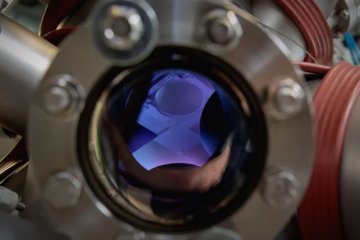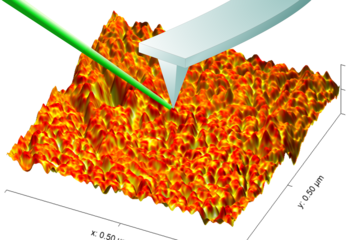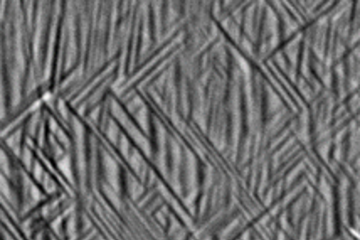All genres
581.
Thesis - PhD
A Contribution to Elucidate Interfacial Electric Double Layer Structures and Their Effects on Tribological Phenomena Using Force Microscopy. Dissertation, Fakultät für Maschinenbau der Ruhr-Universität Bochum, Bochum, Germany (2018)
582.
Thesis - PhD
Hydrogen Permeation based Potentiometry as a New Quantification Tool for Electrochemical Reactivity at Buried Interfaces and under Nanoscopic Electrolyte Layers. Dissertation, Ruhr-Universität Bochum, Bochum, Germany (2017)
583.
Thesis - PhD
Regenerative Nanocomposite-Coatings tailored for Smart Corrosion Protection. Dissertation, Ruhr-Universität Bochum, Fakultät für Maschinenbau, Bochum, Germany (2017)
584.
Thesis - PhD
Passivity and passivity breakdown on copper: In situ and operando observation of surface oxides. Dissertation, Ruhr-Universität Bochum, Fakultät Maschinenbau, Bochum, Germany (2017)
585.
Thesis - PhD
Performance of catalysts in electrode structure – bridging the gap between fundamental catalyst properties and behavior in real applications. Dissertation, Ruhr-Universität Bochum, Fakultät für Maschinenbau, Bochum, Germany (2017)
586.
Thesis - PhD
Investigation of Redox-Responsive Coatings for Zinc Corrosion Protection. Dissertation, Ruhr-Universität Bochum, Bochum, Germany (2015)
587.
Thesis - PhD
In-situ Untersuchungen zu Benetzungsverhalten und Grenzflächenreaktionen beim Feuerverzinken legierter Stähle. Dissertation, Ruhr-Universität-Bochum, Fakultät für Maschinenbau, Bochum, Germany (2009)
588.
Thesis - PhD
Conductive polymers for corrosion protection: A critical investigation. Dissertation, Ruhr-Universität-Bochum, Fakultät für Chemie, Bochum, Germany (2009)
589.
Thesis - PhD
Release Studies on Mesoporous Microcapsules for New Corrosion Protection Systems. Dissertation, Ruhr-Universität, Fakultät für Maschinenbau, Institut für Werkstoffe, Bochum, Germany (2007)
590.
Thesis - PhD
Anfangszustände der Oxidation von Fe-15%Cr Legierungen. Dissertation, Universität Dortmund, Fachbereich Chemie, Dortmund, Germany (2006)
591.
Thesis - PhD
Untersuchungen zum Schädigungsverhalten von ultra-dünnen Plasma-Polymer-Beschichtungen auf mechanisch belasteten Metallsubstanzen. Dissertation, Ruhr-Universität Bochum, Bochum, Germany (2004)
592.
Thesis - Habilitation
Wasserstoff in Metallen: neue Messverfahren zum Nachweis mit hoher räumlicher Auflösung. Habilitation, Ruhr-Universität Bochum, Bochum, Germany (2016)
593.
Report
Novel Annealing Procedures for Improving Hot Dip Galvanizing of High Strength Steels. (2010)
594.
Report
Self-Healing at Cut-Edge of Coil Coated Galvanized Steel. (2009)
595.
Other
Organizer of the workshop “Status and Future Challenges in Characterisation of Interfaces for Electrochemical Applications - Part 1” at the MPIE. (2016)
596.
Other
Schichtsystem zum Korrosionsschutz, (2013)
597.
Other
Process for coating metallic surfaces with an anti-corrosive coating. (accepted)
598.
Other
Symposium D2 - Coatings for Corrosion Protection. (2011)
599.
Other
Process for coating fine particles with conductive polymers, (2008)
600.
Other
Symposium X1 - Electron Transfer Reactions at Organic/Metal Interfaces: From Molecular Monolayer Modified Electrodes to Buried Polymer Metal Interfaces. (2006)











